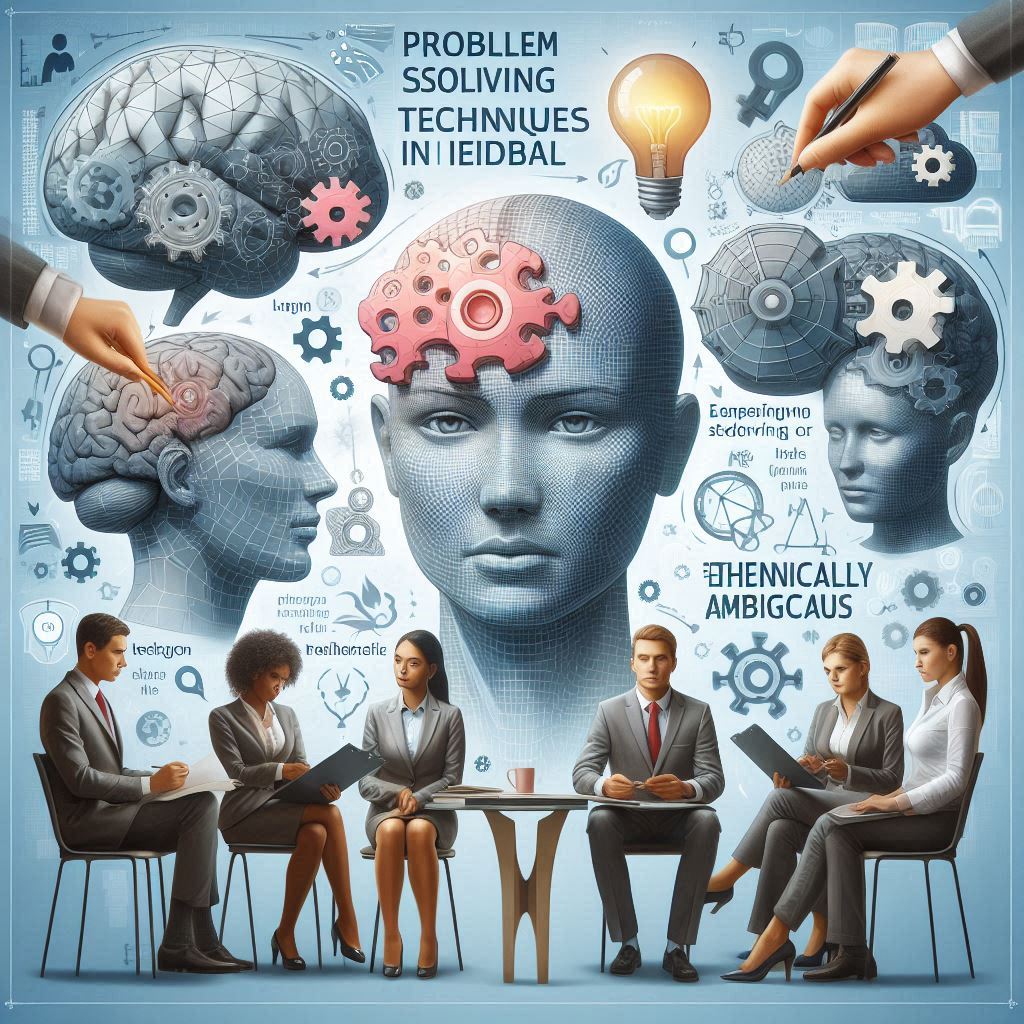Problem Solving Techniques in Mental Models: How to Tackle Challenges Effectively
In our everyday lives, we encounter various challenges that require quick thinking and effective solutions. Whether it’s personal dilemmas, professional obstacles, or complex life decisions, our ability to solve problems often hinges on the mental models we use. Mental models are frameworks or thought patterns we rely on to understand the world and make decisions. By understanding and applying the right mental models, we can improve our problem-solving skills and achieve better outcomes.
In this article, we’ll explore some key mental models and how they can be applied to problem-solving in various contexts.
What Are Mental Models?
Mental models are internal representations of how things work in the real world. They act as guides that help us make sense of situations, predict outcomes, and decide on the best course of action. Think of them as shortcuts that help you break down complex problems into simpler, more manageable parts.
When we face a problem, our brain automatically relies on these models to process information and come up with a solution. The more diverse and accurate your mental models, the better equipped you are to solve problems efficiently.
Why Are Mental Models Important for Problem Solving?
- Clarity in Complex Situations: Mental models allow us to see through the complexity of a problem by focusing on the most critical aspects.
- Structured Thinking: They help us approach problems in a structured way, avoiding impulsive decisions based on incomplete information.
- Informed Decision-Making: The right mental model can lead to better decision-making by considering all relevant factors and potential outcomes.
Key Problem-Solving Techniques Using Mental Models
1. First Principles Thinking
First principles thinking is about breaking a problem down to its fundamental truths and building solutions from the ground up. Instead of relying on assumptions, you identify the core elements of a problem and start your reasoning from there.
How to Apply It:
- Break down a problem into smaller components.
- Ask yourself, “What do I know for certain about this situation?”
- From those basic truths, explore creative ways to address the issue.
For example, when faced with a budget problem at work, instead of accepting cost-cutting measures as the only solution, you could break the situation down by asking: “What are our fixed vs. variable expenses? What are the essential functions we need to prioritize?” This approach might lead to alternative solutions that go beyond simple cost reduction.
2. Inversion
Inversion is a mental model that encourages solving a problem by thinking about what not to do. Instead of focusing solely on the desired outcome, you explore the ways things could go wrong and aim to avoid them.
How to Apply It:
- Instead of asking, “How do I achieve success?” ask, “How could I fail?”
- Identify all potential risks or obstacles.
- Once you understand what could cause failure, take steps to avoid those pitfalls.
This technique is particularly useful in risk management or when making high-stakes decisions. For instance, when launching a new product, you might first consider ways the launch could fail, such as poor marketing or technical glitches, and then work backward to prevent those issues.
3. Pareto Principle (80/20 Rule)
The Pareto Principle states that 80% of your results come from 20% of your efforts. In problem-solving, this model helps you identify the most impactful actions that will yield the greatest results.
How to Apply It:
- Identify the most critical factors contributing to the problem.
- Focus on the 20% of tasks or issues that will have the biggest impact.
- Eliminate or minimize the 80% of efforts that yield minimal results.
For example, in a business context, you might find that 80% of customer complaints are related to just 20% of your products. By focusing on improving those key products, you can solve the majority of the issues with minimal effort.
4. Second-Order Thinking
Second-order thinking goes beyond immediate consequences and considers the long-term effects of a decision. It involves asking, “What happens next?” after each potential solution.
How to Apply It:
- Think beyond the immediate outcome of a decision.
- Consider the ripple effects that your actions will create.
- Make choices that lead to sustainable, long-term success rather than short-term gains.
For example, if a company decides to cut costs by laying off employees, second-order thinking would involve considering the long-term effects on employee morale, productivity, and company reputation, not just the immediate financial savings.
5. Falsifiability
Falsifiability is a principle that encourages us to test our assumptions by trying to prove them wrong, rather than looking for evidence that confirms them. This can prevent overconfidence in faulty solutions.
How to Apply It:
- Identify your assumptions about the problem.
- Try to disprove them by testing for scenarios where they don’t hold true.
- If you can’t disprove your assumptions, you can move forward with more confidence.
For example, if you assume that a new business strategy will work because of market trends, try to challenge that assumption by looking for data or situations where the strategy might fail. This approach helps you avoid costly mistakes that stem from overconfidence in untested ideas.
How to Develop Better Mental Models for Problem Solving
To enhance your problem-solving abilities, it’s essential to build a diverse set of mental models. Here are a few strategies for doing so:
- Read Widely: The more you read and expose yourself to different disciplines (such as science, economics, philosophy, etc.), the more mental models you develop. Different fields offer unique perspectives that can be applied to problem-solving in unexpected ways.
- Challenge Your Assumptions: Regularly question your existing beliefs and assumptions. This helps you avoid narrow thinking and opens the door to more innovative solutions.
- Learn from Experience: Reflect on past problems you’ve solved and consider what mental models you used. Were they effective? How could you have approached the problem differently? Learning from your own experiences builds a more refined set of mental models.
- Collaborate with Others: Engaging with people who think differently from you can introduce you to new mental models. Collaboration often sparks fresh ideas and approaches that you might not have considered on your own.
Conclusion: Harnessing Mental Models for Effective Problem Solving
Mental models are powerful tools that help us navigate complex problems and make informed decisions. By using techniques like first principles thinking, inversion, the Pareto Principle, and second-order thinking, we can improve our problem-solving abilities and achieve better results in both our personal and professional lives.
The key to success is developing a diverse toolkit of mental models and knowing when to apply them. With practice, you’ll find yourself approaching problems with greater clarity, confidence, and creativity.
















Post Comment